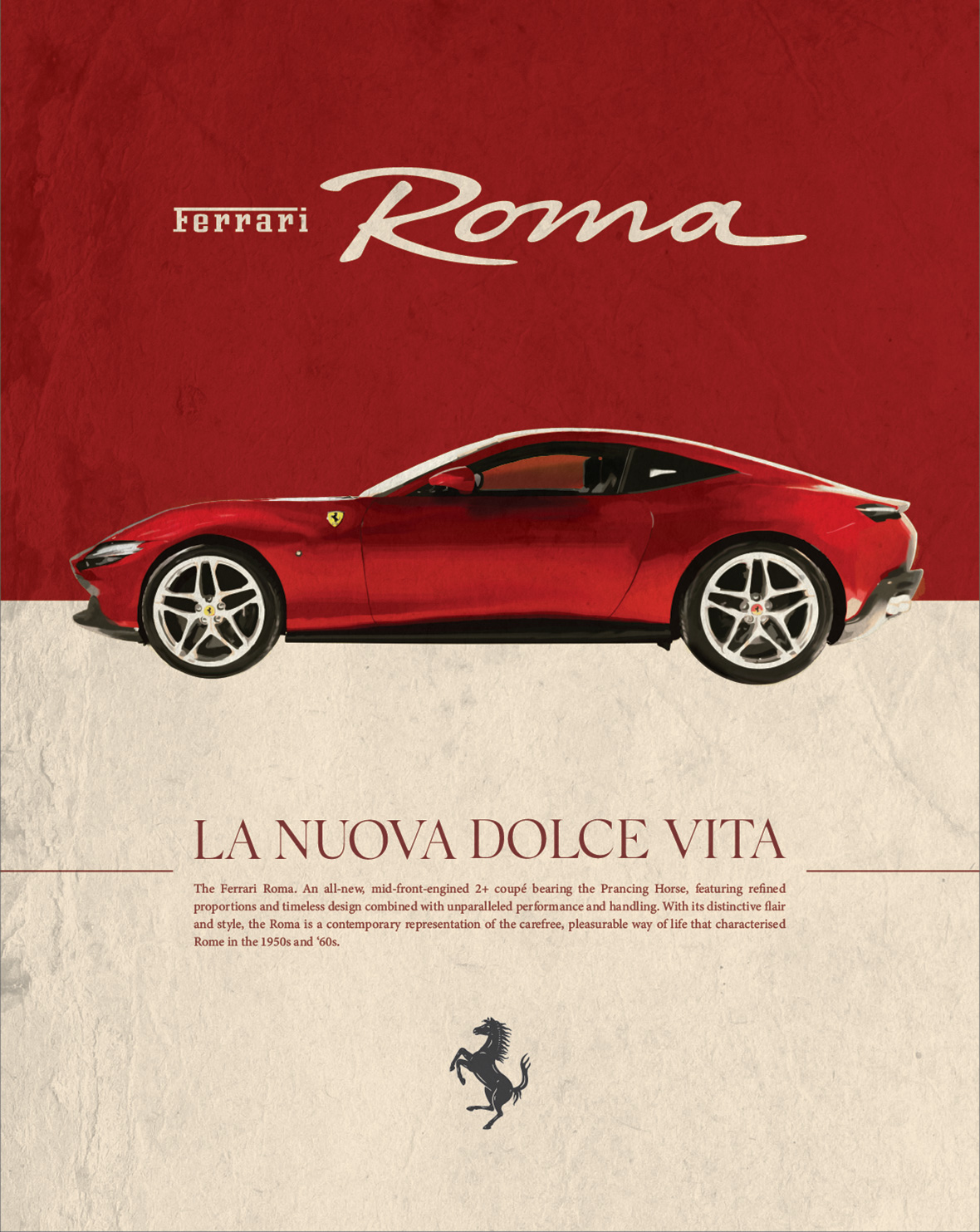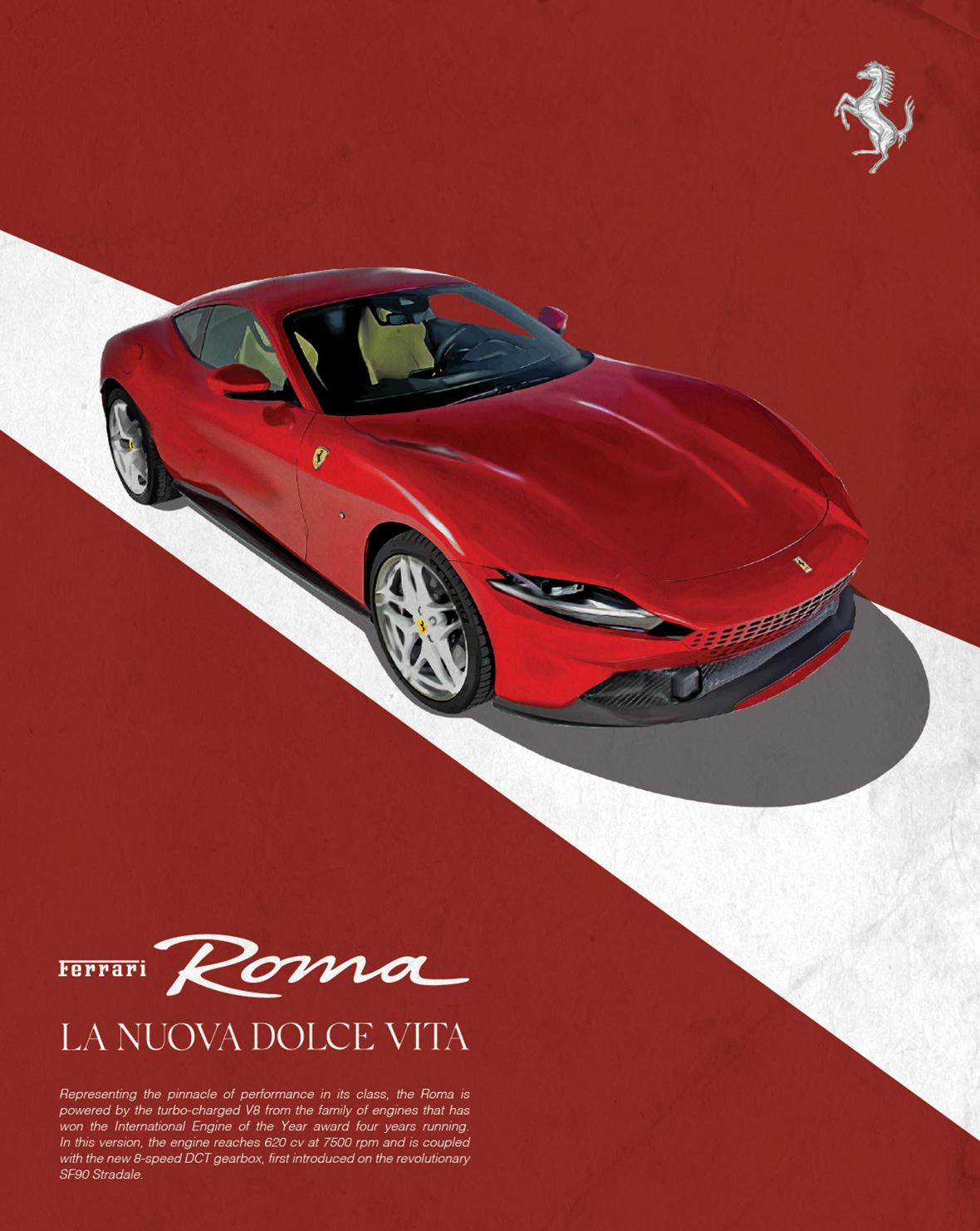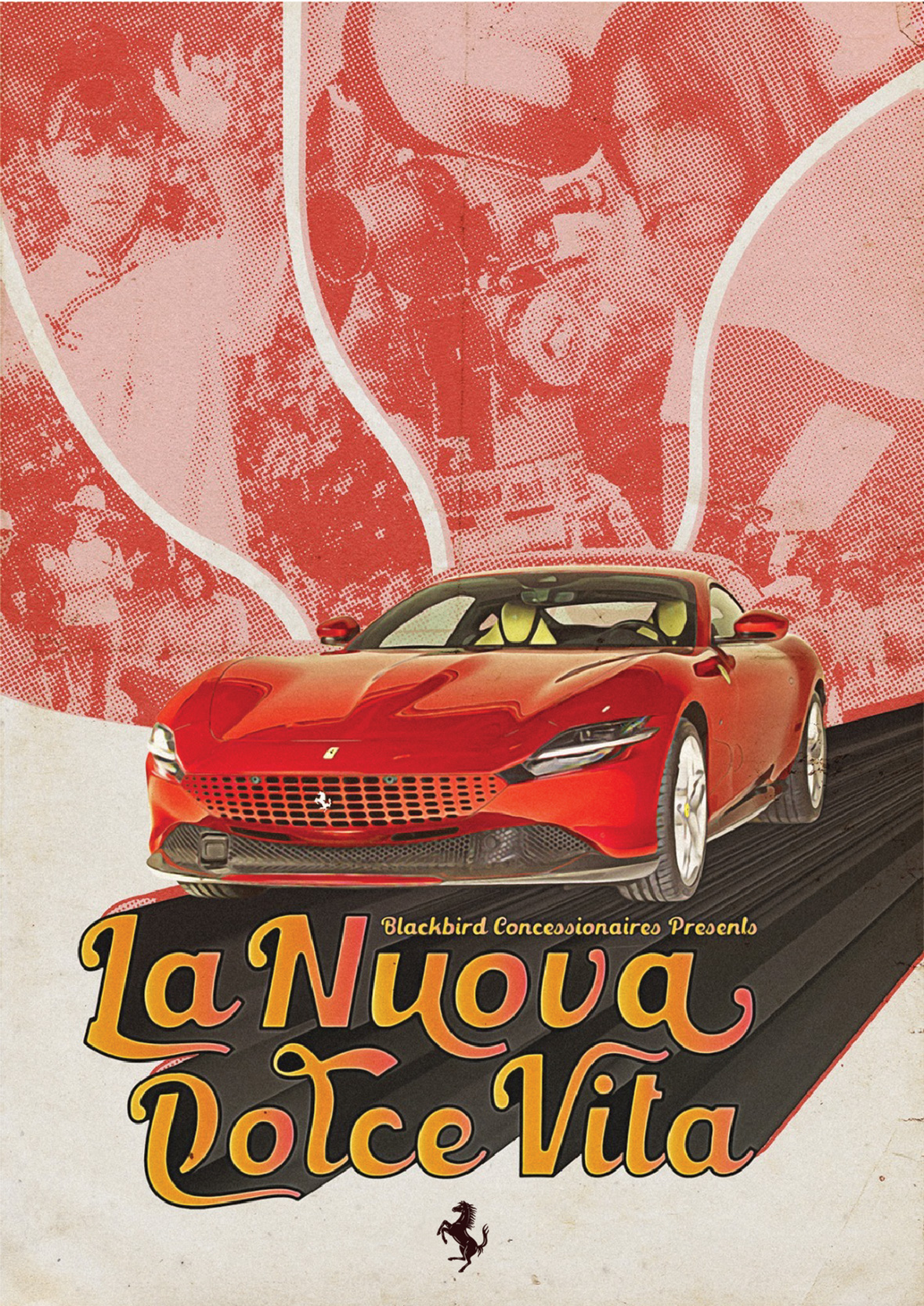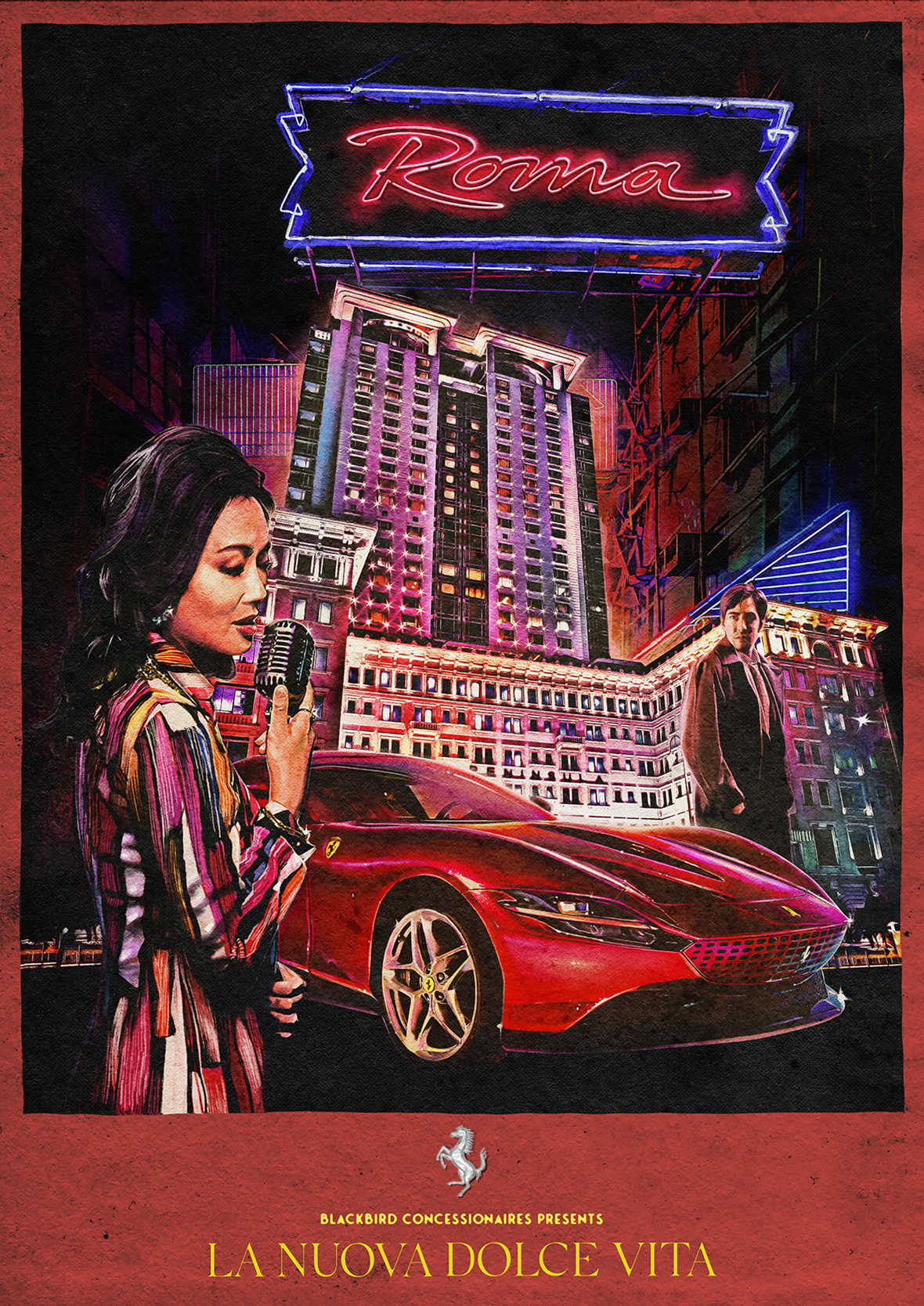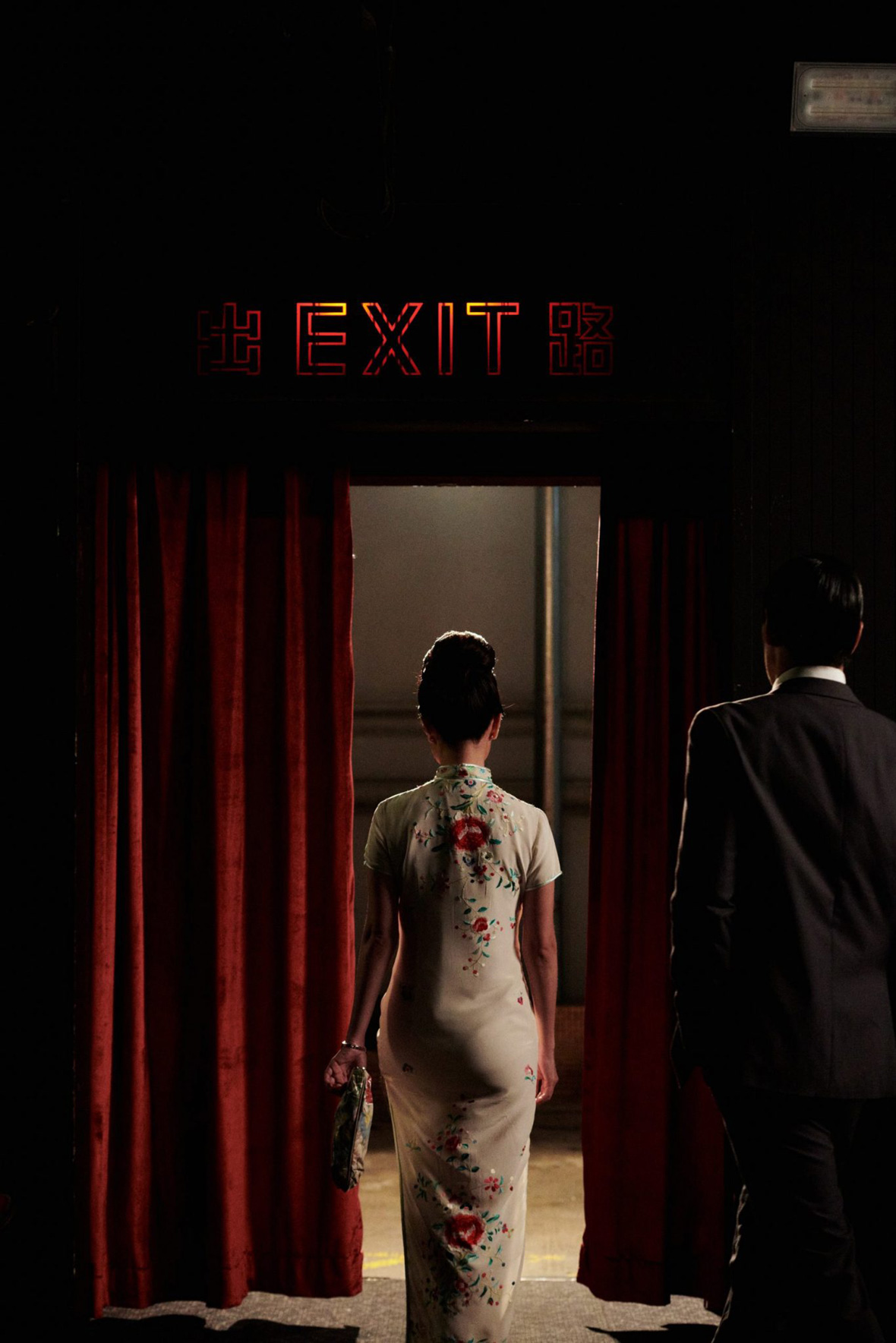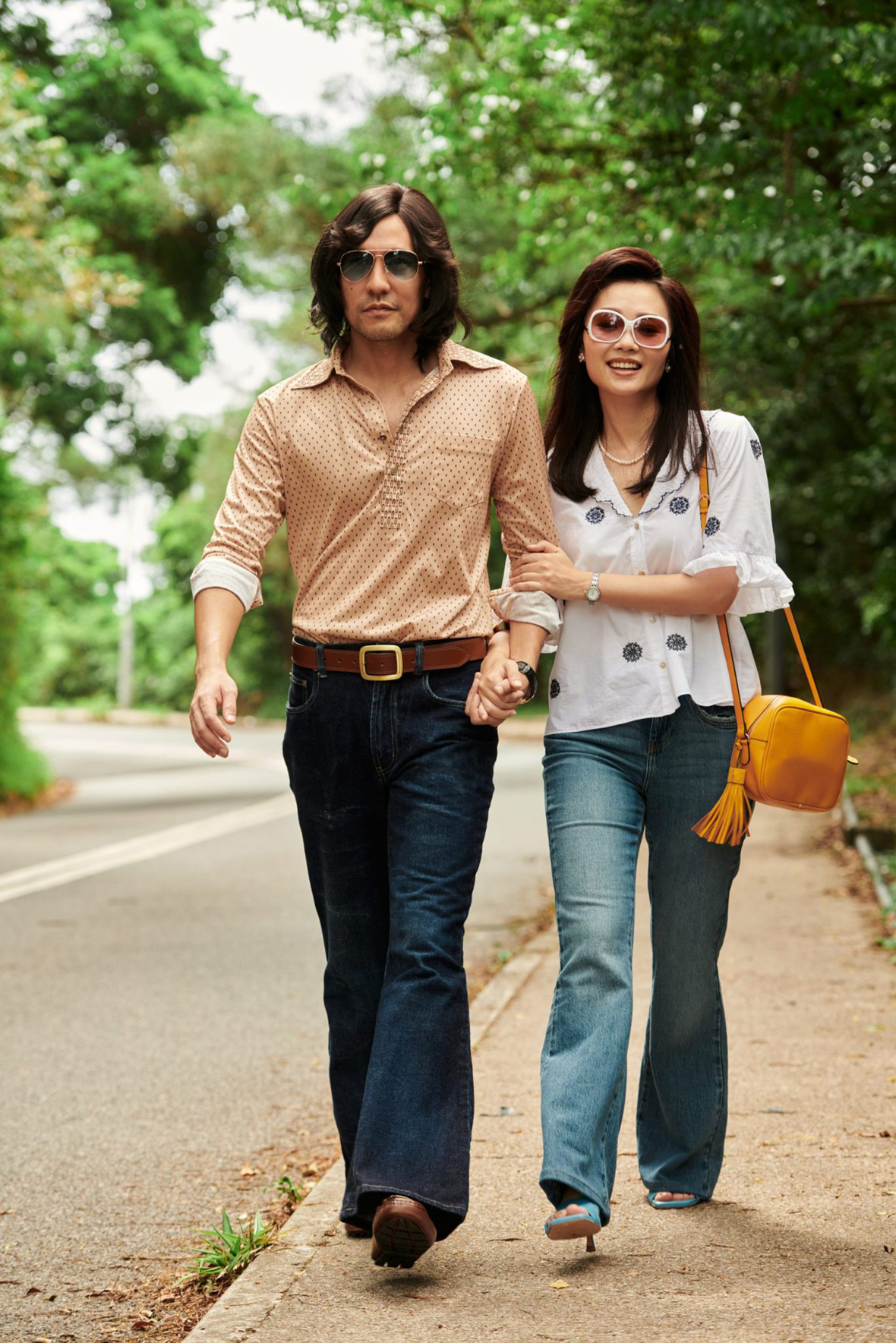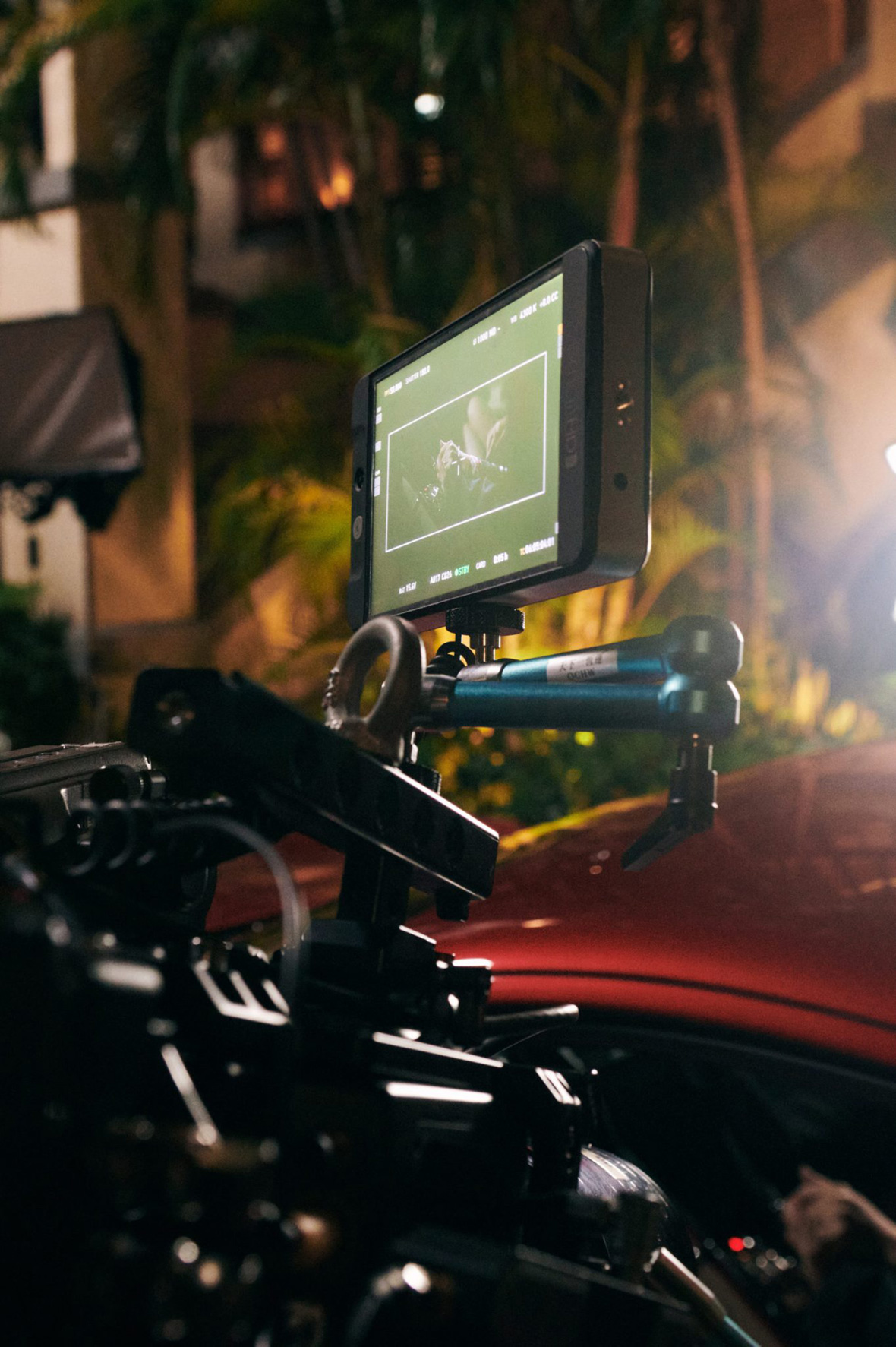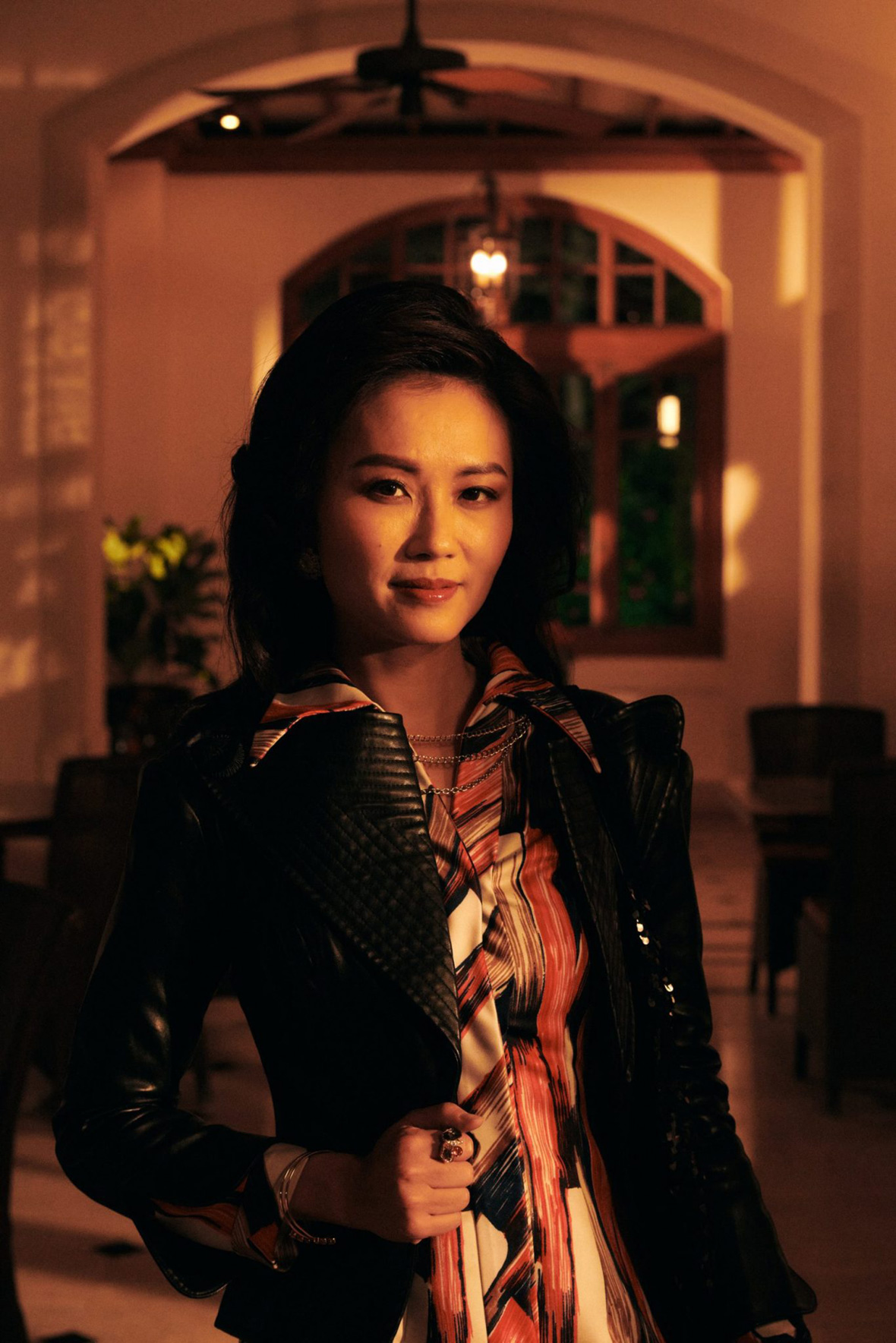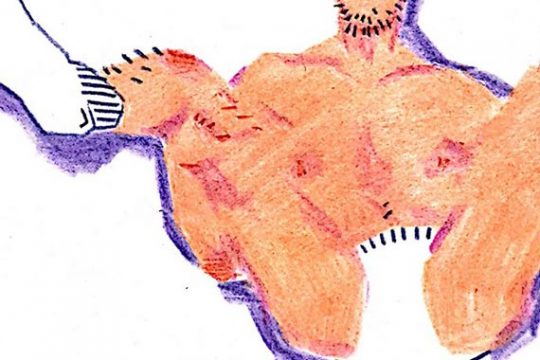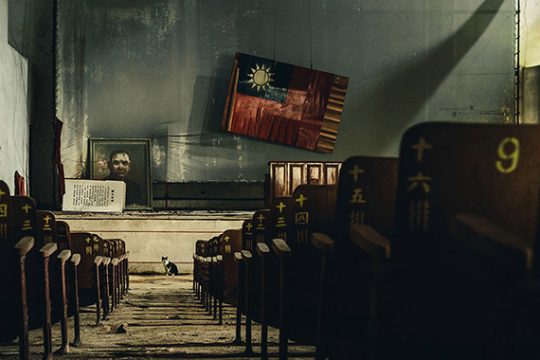无法观看?前往优酷
This story is part of a content partnership and media exchange between Neocha and MAEKAN. To see more of MAEKAN’s content on Neocha, click here.
Over the course of his career, Frank Liew has held several different titles.
Before his current role as Chief Marketing Officer for Blackbird Concessionaires, an authorized Ferrari dealer based in Hong Kong, he played an important role in New Zealand through his boutique Qubic as well as developing the local car scene.
Quite the capable writer and storyteller himself, Frank has become an important generation of car enthusiasts who carry on the legacy and story of the Prancing Horse. Speaking from Hong Kong, he shared the process behind creating a series of short films for the new Ferrari Roma released at the end of June.
The series, dubbed La Nuova Dolce Vita (lit. “The New Dolce Vita”), strikes the perfect balance between unveiling the timeless design of the car as well as penning a love letter to Hong Kong cinema through three different time periods. The automotive world is undergoing some interesting transitions but as you’ll see with La Nuova Dolce Vita, the story is far more complex than the introduction of a new sportscar.
MAEKAN: Can you introduce yourself and what you do?
Frank: My name is Frank Liew, and I am the Chief Marketing Officer for Blackbird Concessionaires. Inside this capacity, I oversee the combined functions of our group’s Marketing, Communications, Creative and Events Production arms, which we employ in developing strategy, content, and experiences for the Blackbird Automotive Group’s Ferrari business. For this particular project, I was also the director of the films.
本篇文章来自新茶媒体合作伙伴 MAEKAN 的内容交换。在 Neocha 上阅读更多 MAEKAN 的文章,请 点击此处。
Frank Liew 曾拥有很多不同的头衔。
在成为法拉利香港正式授权代理商 Blackbird Concessionaires 的首席营销官之前,他曾在新西兰开设一家名为 Qubic 的精品店,也曾涉足当地汽车行业。
Frank 本人是一位出色的讲述者,作为传奇汽车品牌法拉利的拥趸者,他也为这匹“赛马”打造出一整套精彩绝伦的故事。坐标香港,Frank 正要为我们介绍最近他为法拉利推出的一系列短片,一起来看看我们的对谈。
该短片系列取名为“La Nuova Dolce Vita”(译为新甜蜜生活),为法拉利新款车型套上了经典的外衣,同时致敬了跨越三个不同时期的香港电影,完成了一次恰到好处的融合。当前的汽车行业正在经历一些有趣的转变,但正如“La Nuova Dolce Vita”所呈现的那样,影片要讲的故事远不只是一台新款跑车。
MAEKAN: 能介绍一下你自己和你的工作吗?
Frank: 我是 Frank Liew,现在是 Blackbird Concessionaires(法拉利跑车官方香港代理商)的首席营销官。我主要负责监督公司的营销、传播、创意和活动制作,为 Blackbird Automotive 的法拉利业务制定策略、内容和客户体验。在这次短片项目中,我担任导演一职。
MAEKAN: How would you describe the Blackbird Concessionaires’ relationship with Ferrari?
Frank: Well, first and foremost, we are the sole official dealer of Ferrari cars and after-sales in Hong Kong and Macau. We have the great privilege of working with Ferrari’s head office on a number of different initiatives, given our close relationship to the brand and its key individuals in Italy.
This has been a relationship that was cultivated over a number of years, and we’re honored to have Ferrari’s trust in being able to produce world-class content, such as last year’s Ferrari P80/C one-off project and documentary, which we won the Best Short Documentary award at the 2019 International Motor Film Festival.
Having been with the business since day one, it’s been a pretty interesting journey, especially knowing that we represent our region of the world, which is sometimes still underrepresented on the world stage I feel.
MAEKAN: Blackbird Concessionaires 与法拉利之间是一种怎样的合作关系?
Frank: 首先,我们是法拉利在香港和澳门唯一的官方汽车和售后服务代理商。我们和法拉利品牌及其意大利总部的关键人物都有着很密切的来往,很荣幸能与法拉利总部开展多项合作。
双方的关系拥有多年的积累,很开心能获得法拉利的信任,为品牌打造世界一流的内容。2018 年我们给法拉利跑车 P80/C 创作项目和纪录片,还拿到了 2019 年国际汽车电影节最佳短篇纪录片。我从一开始就参与了这个项目,整个过程十分有趣,更重要的是,我们所代表的是一个比较少机会在世界舞台上发声的地区。
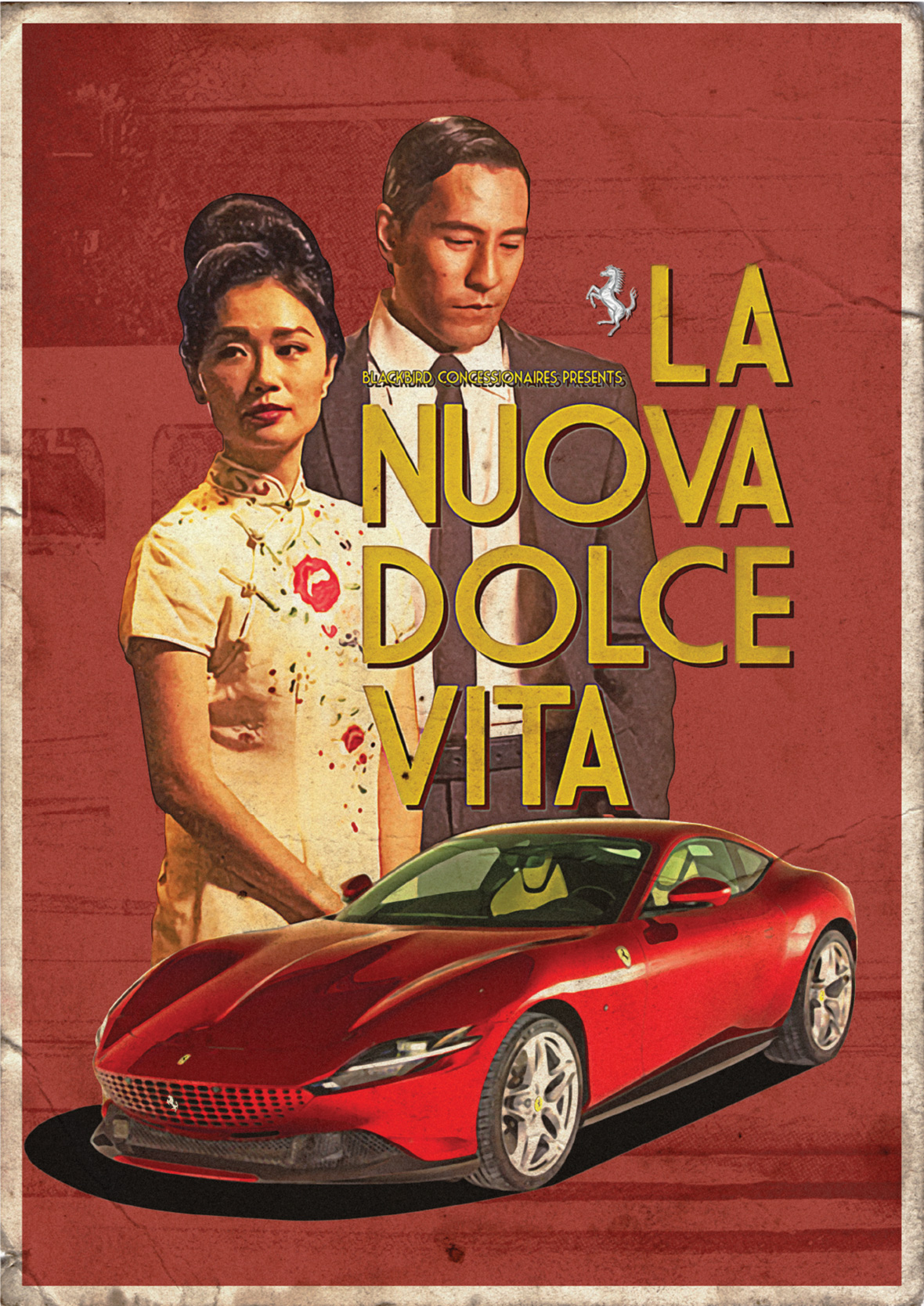
MAEKAN: Can you talk a little bit about the catalyst for this series?
Frank: Well, there were a number of factors that led to the discussion of this particular project. First off, it’s of no surprise to many of us that the first half of this year presented an unprecedented challenge for brands all over the world, given the global pandemic and the abrupt halt of the global supply chain.
With so much uncertainty in the air, a lot of marketers were faced with a never-before-seen challenge of revising their calendars and product offerings. I mean, let’s be honest, it was complete chaos. Events were being canceled en masse, countries were being shut down. Brands, on the whole, erred on the side of caution, and for good reason. We were first approached by Ferrari about developing this in January/February of this year, initially as a brief on how we could “virtually” launch the car, given the world’s lockdown procedures.
Now, the Roma represents a huge milestone in Ferrari’s design language and product offering, but given health ordinances that were changing by the month, it meant that it would be difficult to follow the traditional format of a huge in-person launch with hundreds of clients and prospective owners in attendance.
I mean, overall, the pandemic forced the automotive industry to drastically rethink its marketing processes, especially with the cancelation of all the major Auto Shows worldwide. From there, it became a discussion on how we could think of a way to creatively present this product, give it the gravity and impact it deserves but to also maintain an engaging, innovative product messaging.
So in a way, we tried to turn a negative into a challenge on how to deliver something truly positive. And what we ended up with is presenting a multi-medium campaign that encompassed original film content, illustration work, a three-week pre-launch social media and digital roll-out, culminated by a multi-day private physical preview event format that kinda tied the whole thing together. When we had to give the final green light to all production in April, it was a bit of a gamble, but one that I’m glad to say paid off.
MAEKAN: 能谈谈促成此系列影片的契机吗?
Frank: 促成这个项目的因素有很多。2020 上半年,全球疫情和供应链的突然中断对全球品牌造成了前所未有的挑战。
由于存在诸多未知变数,许多营销人员在时间安排和产品服务方面都面临严峻挑战,一切手头工作乱作一团。大量活动被取消,各个国家陷入封锁。理所当然,品牌变得格外谨慎。2020 年初,法拉利第一次就这个项目联系我们,考虑到世界各地的封锁措施,品牌希望我们能以“线上的方式”来发布这款车型。
Roma 标志着法拉利的设计语言和产品的一个重要里程碑,但在疫情阶段,想按照以往那样邀请数百名嘉宾和潜在客户来参加大型线下发布会变得特别困难。
总的来说,疫情迫使汽车行业不得不重新思考其营销手段,尤其是在全球各大车展都已被取消的情形下。我们不断思考如何找到一种创意方式来展示这款车,并赋予它应有的震撼和影响力,同时又能传达出引人入胜和创新的产品信息。
从某种程度上可以说,我们将消极的局面变成一次挑战,去努力达成一些积极的效果,最终打造出一个结合多方媒介的宣传方案,包括了原创影片内容、插图作品以及为期三周的发布前社交媒体推广,最后以一个持续多天的私人线下预览活动形式,将各方面的工作串连起来。4 月份正式上线时,我们都很忐忑,但我很高兴我们的努力没有白费。
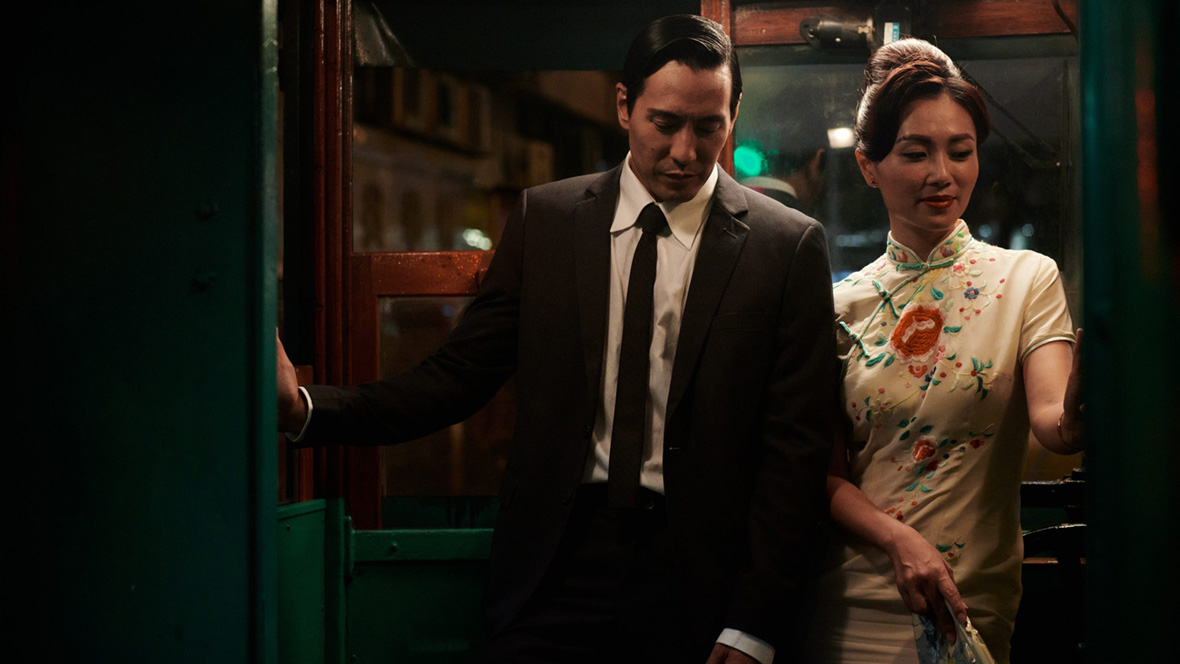
MAEKAN: What’s your own personal affinity towards Hong Kong film?
Frank: So I’m a re-transplant back to Asia. I was born in Taiwan, I spent my formative years in Singapore, and then my schooling years in New Zealand where I started my career in the late 90s, well, early 2000’s, before I took the opportunity to relocate to Hong Kong about 9 years ago.
Growing up in the 80s and 90s with the Internet in its nascent years, you didn’t really have much to rely on in terms of understanding what was happening in Asia, or anywhere else in the world for that matter. I mean, we only had what we could find and what we could get our hands on—TV, magazines, music, and yes, films. Films were a respite to all this.
I remember shaping my entire view of Hong Kong and, by association, Asian culture almost entirely through the lens of films and popular culture. Films, in a way, changed and even dictated our standards for so many things—success, life, love, heroes, and villains. It allowed me to have some kind of anchor to the world which I was supposed to have come from—if that makes any sense.
I think many people who were transplanted to a Western world in their youth will probably relate to this—we cling onto these things like cultural lighthouses. I was thoroughly obsessed with Stephen Chow’s films, Chow Yun Fat in God of Gamblers, John Woo’s action films, the Gu Wuk Jai Young & Dangerous series. And if these formed my impression of what Hong Kong life was like, then surely it must have been the same for thousands of others in my generation and time all over the world.
MAEKAN: 你个人和香港电影之间有何渊源?
Frank: 我是一名亚裔回流移民,出生在台湾,在新加坡长大,然后去了新西兰读书,一直到 90 年代末和 2000 年代初,在新西兰开始了自己的职业生涯。后来大约在 9 年前,我又移居香港。
80 和 90 年代,互联网才刚刚起步,要了解亚洲或世界其他地方所发生的事情依然并不容易。我们能找到和接触到的途径只有电视、报纸、杂志、音乐,当然还有电影,电影带给了我们很多安慰。
在我记忆中,我对香港乃至亚洲的文化的印象几乎都来自电影和流行文化。在某种程度上,电影改变甚至决定了我们在许多事情上的标准,譬如成功、生活、爱情、英雄和反派,或许可以说,它让我对根源有了基本的认识。
我觉得很多在年轻时移民到西方国家的人可能会对此有共鸣,这些东西是我们所紧紧抓住的文化灯塔。我很喜欢周星驰的电影,还有《赌神》中的周润发、吴宇森的动作片和古惑仔系列。我想,很多世界各地的人,都是从香港电影开始了解这座城市的。
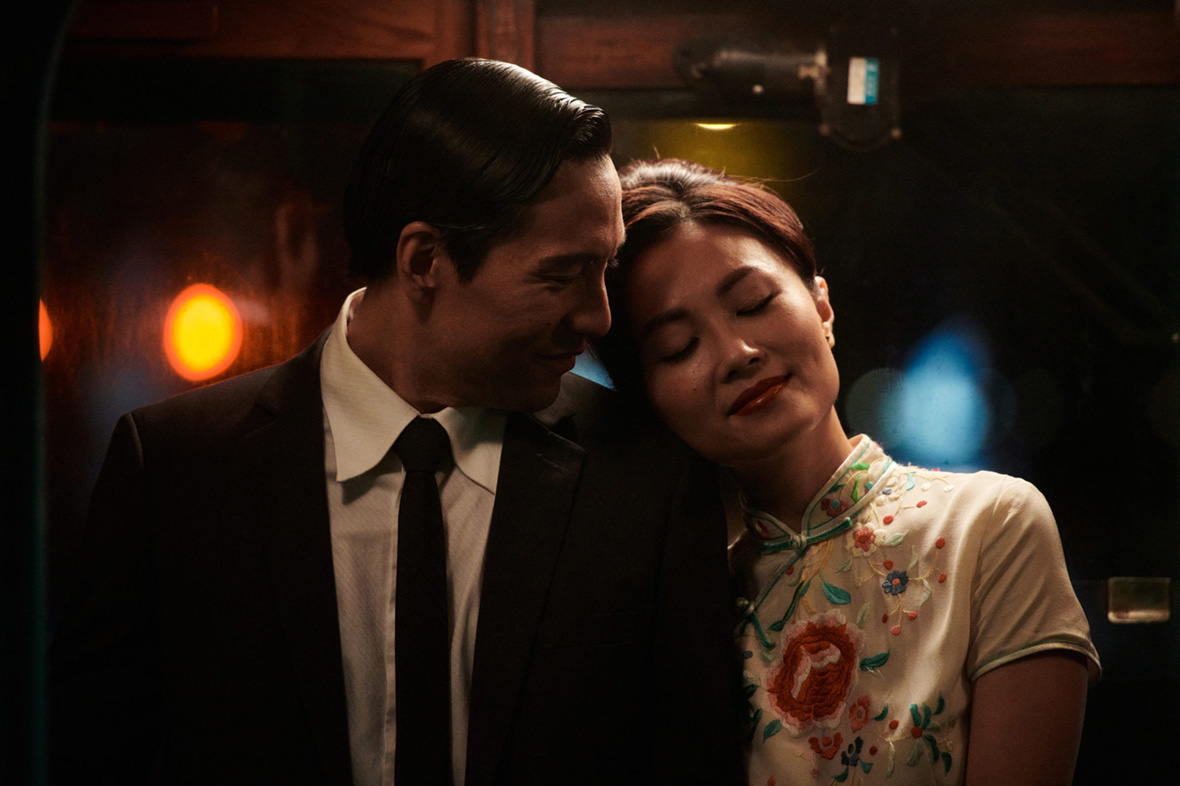
MAEKAN: For the unfamiliar, what impact do you think HK film had on the global entertainment industry during its heyday?
Frank: Undoubtedly, Hong Kong film brought the Asian zeitgeist to the world. I cannot think of any other medium of its time being able to share the stories of how they lived, how they loved, and the tales they wanted to tell. I mean as an outsider, it was fascinating for me to see. I never noticed it back then, but looking back at the films now, all the continuity errors, the rather corny effects and the rough-and-tumble level of production really exposed a certain level of authenticity and tenacity when it came to making a film in Hong Kong.
Many of these guys didn’t have professional training or film school degrees. They didn’t have the huge studio budgets of the West—instead, they improvised, you know, performing their own stunts. Kung-fu choreographers came from Cantonese opera, guys improvised camera moves and tricks to establish action and story.
They didn’t learn it in a class; they learned it out on the set. And the result of this is that they built this entire cottage industry inside their own little ecosystem, one that exists to this very day. Essentially, if you watch the entire catalog of Hong Kong’s film masterpieces throughout the years you’ll literally see it improve film by film.
So on a larger scale, this kinda represents the sheer determination of the Asian work mentality. They were almost learning it as they went, passing their knowledge from one generation to another generation of filmmakers. And it’s that master and student mentality—you know the sifu and apprentice. That’s an integral part of learning a trade in Hong Kong, and there’s a certain kind of beauty to that—learning by trial and error.
MAEKAN: 你觉得鼎盛时期的香港电影对全球娱乐产业带来怎样的影响?
Frank: 毫无疑问,香港电影向世界展示了亚洲的时代精神。我想不出有任何其他的媒介能像电影这样去分享亚洲本地人们的生活、爱情以及他们的故事,这些内容对于像我这样的外人来说很有意思,很值得一看。我当年没注意过,但现在回想起来,那些穿帮镜头、粗劣的特效、参差不齐的制作水平其实在一定程度上暴露了当时香港电影行业的真实性与顽强。
这些拍电影的人中有许多人压根没接受过专业培训,也没有电影学院学位。他们没有欧美那样巨额的拍摄预算,但他们擅长即兴创作和表演各种特技。他们从粤剧找来功夫编舞师,即兴创作一些运镜和技巧,来呈现动作和故事。
他们没有去上过专业的课程,都是在片场边拍边学,最终在一个本地电影生态圈里建立了作坊式的电影行业,这个生态圈一直存在到今天。如果你完整观看过这些年来那些有名的香港电影,你会发现电影的水准其实一直在逐部提高。
往大了看,这其实代表了亚洲人一种坚韧不拔的工作心态。他们几乎都是边拍边学,将学到的经验一代代地流传给下一代的电影人。更像是一种师傅和徒弟的关系。这是在香港学习一门手艺的必经之路,这种传统里有一种魅力,那就是在错误中不断去摸索。

MAEKAN: There are quite a few different juxtapositions taking place with this series (i.e. modern car, old school backdrop). Was there a particular challenge when it came to managing these different layers?
Frank: I remember when we first viewed the car in Rome at the end of 2019, I had a moment with one of the lead designers of the project. And I asked him who he envisioned in his mind when he first put pen to paper, I mean I was hoping to glean some information on the demo or psychographics of its intended buyer, that’s a very important thing for marketing, but instead, he said perhaps the most Italian thing anyone could say, “it is for those who appreciate timeless design.”
But you know what, that really stuck with me that’s the reason why I’m telling you that answer now. The car’s design form adheres to the concept of purity—doing away with unnecessary forms or embellishments. It’s supposed to look like it was carved from a single block of metal.
So if you take a step back and just glance at the car, I felt this, as a form, could exist 30 years in the past or 30 years in the future. So this explains why we developed this concept of placing the car anachronistically throughout the three-part film over three clear eras of time but to also add the tribute to iconic film as an additional layer on top of it.
It’s supposed to also reflect the timeless nature of the Roma’s form. But one thing I will say is, primarily, this film is a story about the two characters, a triptych plot arc that tells us how they came to be, and exploring the ideas of romance, beauty, and most importantly, enterprise and determination. I’ve spoken earlier on this being a huge part of the Asian psyche—before enjoying the obvious fruits of their labor.
So in a way, the Roma is a voyeur to all this and plays a prominent if not slightly secondary role before coming into full form at the end of Part Three.
MAEKAN: 这组影片中呈现了很多不同的对比元素(比如现代汽车与复古背景),处理这些不同层次时有没有比较困难的地方?
Frank: 我记得 2019 年底我们在罗马第一次看到这辆车,当时我和项目一位主设计师聊过一次。我问他,当他第一次下笔设计时,他在脑海中所设想的车主是怎样的一个人,因为我想收集一些关于目标买家群体或心理特点的信息,这些信息对营销来说很重要;但是,他给了我一个非常意大利人的回答,他说:“这辆车是为那些懂得欣赏经典的人所设计的。”
他的这句话给我留下了很深刻的印象,这也是为什么我现在要跟你说。这款车的设计充分体现了纯粹至上的概念,摒弃一切不必要的形式或装饰,看上去就像是从一整块儿金属上雕刻而成的。
看这辆车,你会觉得它的外形既可以说是来自 30 年前,也可以说是来自 30 年后的未来。这是我们影片概念的来源,通过三段影片,将这款车分别置于三个不同时代,同时致敬经典电影作品,丰富系列的内涵。
影片主要围绕两个角色展开,分成三段故事剧情,探讨关于爱与美的主题,更重要的是,体现积极进取与不屈不挠的精神。我前面也提过,这是亚洲人身上很突出的一些品质,通过努力付出得到收获。
与此同时,Roma 汽车是影片的最大主角,它始终在一旁默默见证着这一切,直至在第三段影片结尾展露全面的车身细节。
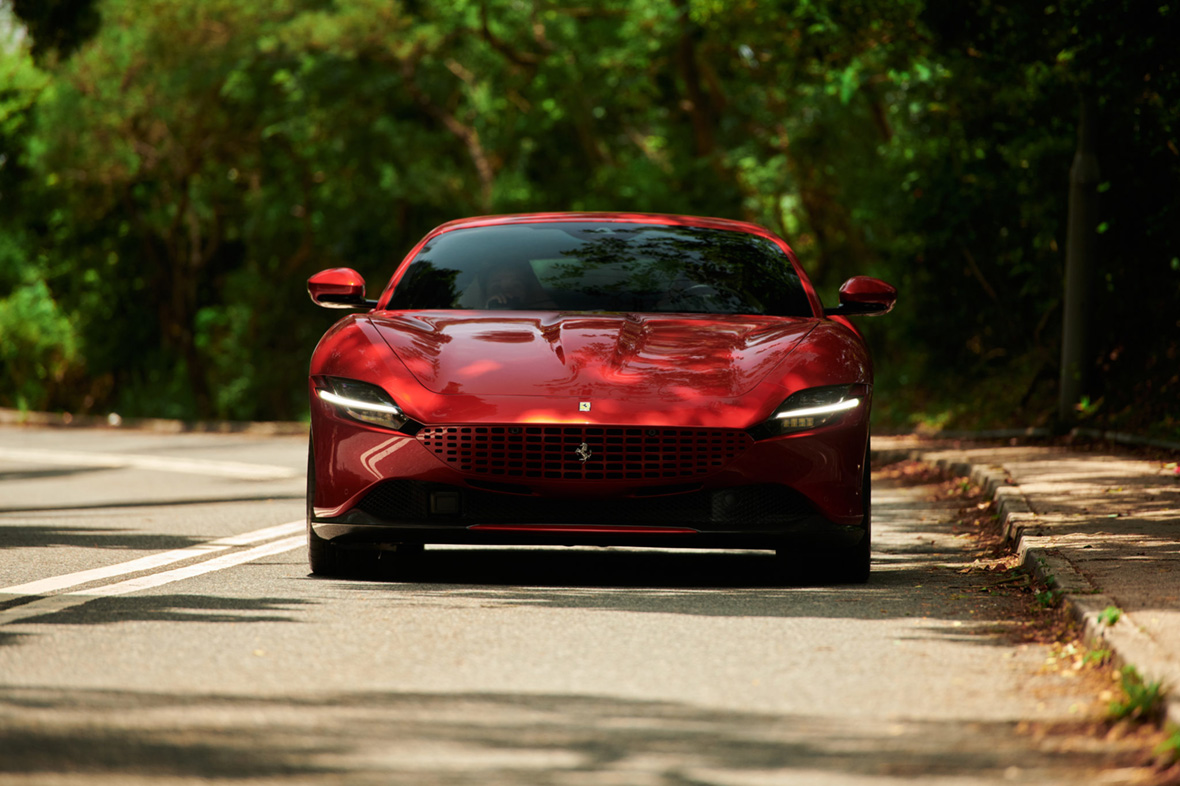
MAEKAN: Talk us through the Easter eggs in the film.
Frank: There are numerous Easter eggs that I hope film junkies would be able to pick up on. So, I’m going to try and break it down, film by film. Starting with part one—clearly, this is a nod to Wong Kar Wai’s epic masterpiece In the Mood for Love, generally considered one of the greatest pieces of Asian film of all time, of course with the expert cinematography of Christopher Doyle.
Now, in the opening scenes, there’s a lot of mystery—you’ll notice in the original film there’s a lot of shots of backs of heads, which was a little bit strange because it went against the conventional wisdom of the time, overlapping bodies and face and it gives this sense of crowdedness—which we all know is an integral part of Hong Kong life and something he executed perfectly in his film.
There’s also a lot of “frame-in-frame” shots, which means, the actors are framed inside smaller frames inside the shot. A lot of the original’s film tension was in the “will they, or won’t they” moments, you know, tense romantic scenes in sometimes crowded areas—in our film, it was inside a crowded tram. And we decided to take a shot at recreating that feeling, the first contact between our two lead characters—developing a growing closeness between them as the short film progressed.
Thankfully, we had a different type of resolution compared to the first film.
Now in the second film, the tribute is more to an entire genre of film, one that was invented in Hong Kong and went on to influence so much of the world. I mean that, obviously, was kung fu films, popularised by the infamous Shaw Brothers studio, which was a monolith in Hong Kong film production in its heyday of the 1970s. So after some careful research and speaking to cinematographers of the time, we actually found the location where they shot many of their films, including the 36th Chamber of Shaolin, which is today the Clearwater Bay Country Park.
We obtained the proper permits, and we scouted almost the exact backdrops in key moments of that film. To top this off, our props department also located an Arriflex 35 that was used in the period to shoot these films, which added yet another layer to those with a keener eye. So all the props — including that little ‘rice box’ in the lunch scene are actually from the period we are referencing. It was all in the very small details that we wanted people to notice.
For the last film, the Easter eggs were more nuanced in our tribute to perhaps every teenager of the 90s favorite film—A Better Tomorrow (1986), John Woo’s film that launched Chow Yun Fat’s career and gave birth to that legendary character “Mark Gor” (brother Mark).
You know, people have emulated this character for years since that film. But since we were approaching resolution in our plot arc with our lead characters, the tribute was mostly encased within the male lead character’s wardrobe and mannerisms—the match in his mouth, the silver tie with the striped shirt, his hair—and that very infamous “corridor walk” scene with the trench coat, which you’ll also remember from God of Gamblers (1989) too.
At the end of the film though, the credit roll itself is a tribute to that film. The choice of the typeface, the prominence given to everyone’s Chinese names was a tribute to the way they were presented in films of that era. And the music was heavily inspired by the film, which I hope people will pick up
on. However, for the most part, though, the last part was about finally reaching a resolution to our character’s love story, that sense of accomplishment and celebration, and the reveal of the Ferrari Roma.
So I wanna point out that there’s a lot of balance in the films as well. You’ll see overall, the couple gets most of the screen time in the first part, where the Roma gets most of the screen time in the third part. Also, in the beginning, the man tries to be the dominant character and makes the first move to hold the woman’s hand, while the final shot of our two characters sees that process in reverse, she initiates the move to hold his hand, as she becomes the dominant character in their relationship by becoming a star in their plot arc. The collaboration in the center is that balance point.
MAEKAN: 跟我们聊聊影片中的彩蛋。
Frank: 影片中有很多彩蛋,等待着影迷的发现。首先是第一段影片,显然是在致敬王家卫执导的经典作品《花样年华》,这部电影被奉为有史以来最伟大的亚洲电影之一;除此这外,还有对杜可风拍摄风格的致敬。
影片开场就充满东方的神秘感,运用到原作电影中有很多人物背影的镜头,这种拍摄手法其实是与当时的主流做法背道而弛的,所以会令人不解,重叠的身体和面部形成一种拥挤感,正如我们所熟悉的香港生活,他在电影中完美地体现了这一点。
另外还有很多“画中画”镜头。原作电影里很多紧张感都来自男女主角在人来人往的环境中那些“暧昧不清”的时刻,而在我们的影片中,这些场面换到了拥挤的电车里。我们想尝试重现这种氛围,这是两位主角之间的第一次接触,随着短片的推进,二人的关系也越来越亲密。幸好,与原作电影相比,这部影片会有不一样的结局。
第二段影片更多的是向一种电影流派的致敬,一种诞生于香港,继而推广到世界很多地方的电影流派,也就是功夫片。这类影片不得不提的就是邵氏电影公司,是香港电影行业在 1970 年代鼎盛时期的巨头电影公司。我找来那个时代的摄影师深入攀谈,联系了当年他们经常用来拍摄电影的场地,最后选择了原来《少林三十六房》的拍摄地进行拍摄,即今天的清水湾郊野公园。
系列拍摄过程中,很多场景都来自电影中的画面。更妙的是,我们的道具组还找到一台当年电影圈内常用的 Arriflex 35 摄影机,带给资深影迷十足的惊喜。所有的道具,就连午餐场景中的那个小“饭盒”都来自那个时代。
最后一段影片的彩蛋要更加微妙,所致敬的影片是几乎所有 90 年代年轻人都很喜欢的《英雄本色》(1986),这部由吴宇森执导的电影让周润发一炮而红,缔造了“小马哥”这个荧幕世上的传奇。
自《英雄本色》上映以来,“小马哥”一直被模仿,从未被超越。我们短片的致敬主要围绕“小马哥”的着装、举止,例如嘴叼火柴的形象、条纹衬衫搭配银色领带、发型等等,还有身穿风衣穿过走廊的经典场面。
就连影片最后的片尾谢幕段落也参考了这部经典。字体的风格、突出的中文姓名等等,都重现了那个时代电影的特点。另外,音乐部分也深受这部电影的启发。不过,这段影片主要是为两位角色之间的爱情故事划上圆满的句号,展现成就和喜悦,为 Roma 车型揭幕。
该系列影片讲究首尾呼应,达成一种平衡感。在第一段影片中,大部分镜头都给到情侣,第三段影片中,镜头的焦点又回到 Roma 车上。另外,一开始时,男主角试图成为主导的一方,主动去握女主角的手;而影片最后一个镜头却刚好相反,变成女主角去主动握男主的手。因为在影片中,女主通过努力成为明星,因此成为了两人关系中的主导者。系列拍摄的关键,就在于不断去寻找剧情上的寻找平衡点。
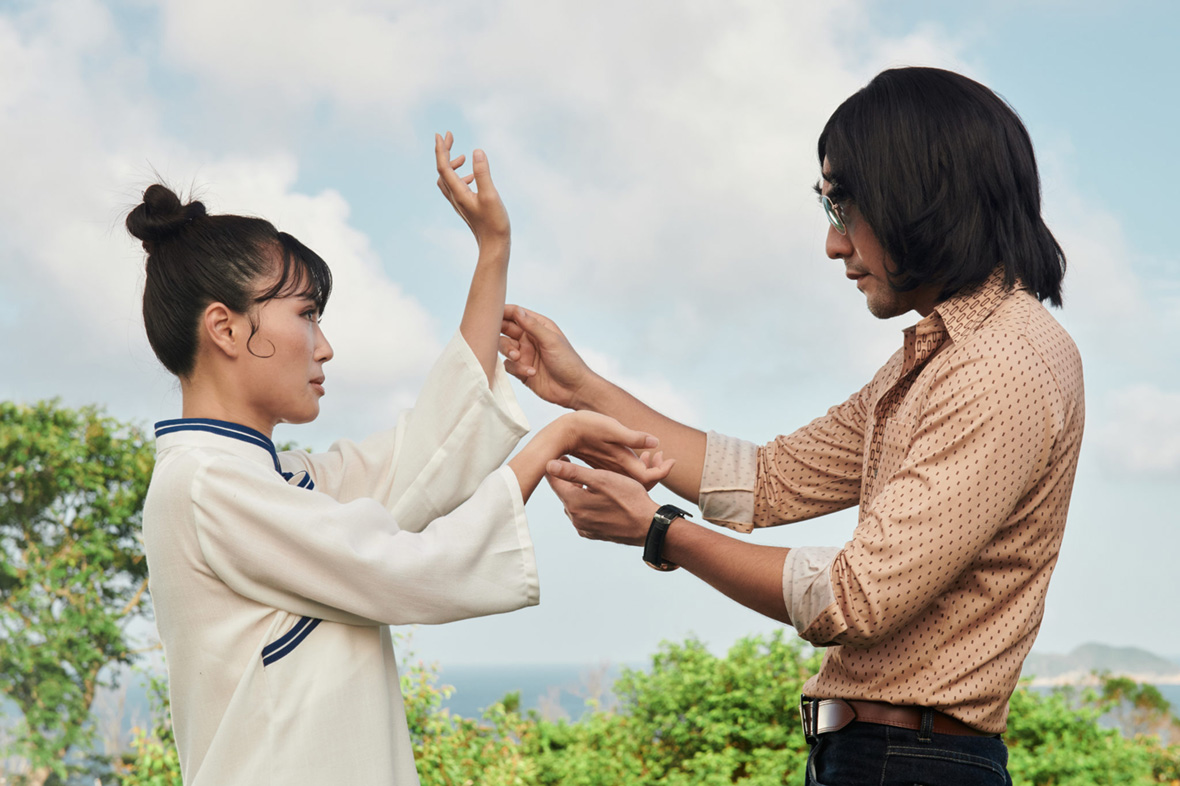
MAEKAN: What was the process like of getting sign off for this?
Frank: So, Ferrari is perhaps the most well-known Italian brand in the world, and with that comes a great responsibility to do the brand justice, and therefore, rightfully so, they have entire departments dedicated to brand compliance.
I had to present this concept and the boards along with our concept for the physical event to multiple layers of management, but thankfully, as I’ve said before, we enjoy a very positive relationship with key people inside the company, which allowed them to place a certain level of trust in our work and our standards. These kinds of projects, it’s a two-way street, ultimately. We have to give, and they have to give something back at the same time too. But ultimately, I’m happy they appreciated us for what we could do for them, and we delivered our best.
MAEKAN: 获得品牌方的认可有什么感想?
Frank: 法拉利可以说是世界上最知名的意大利品牌,所以要求自然也更高,责任也更重大,品牌本身也设立了专门的部门,以保证合规方面的工作。
我要将整个概念、故事板以及我们的线下活动概念展示给各级管理层。但正如我之前所说,我们很庆幸能与品牌内部的关键人物保持着非常愉快的关系,所以他们也比较信任我们的工作和标准。说到底,这类项目就像一条双行道,双方都必须相互付出。我很高兴他们对我们的工作表示了满意,我们也尽了最大努力来完成这个项目。
MAEKAN: Can you talk a little bit about the team involved?
Frank: To give another layer to this whole production, the entire team came from the professional Hong Kong film industry, from our producers and PAs to our DoP and the camera and lighting team.
Many of these people worked on Hong Kong feature film sets and are even second-generation film industry workers, who were able to also bring advice to the table on small nuances—such as how crews had their lunch in the 1970s period of the second film, what equipment was used on set back then, and so forth. Many people here in the film industry learn their jobs on the job, and it shows. Their experience is invaluable.
As a director, it’s my job to find people whom I can rely on so everyone has their duties on set. I always like to say to people that a film crew operates almost like a military unit sometimes. Everyone has their specialist skill, and once combined, like Voltron, we use them all to get to the mission’s goal. This is now the 3rd time I’d worked with my DOP Derrick Fong, and we have a great workflow now between us in where I can express my vision, and he understands how to build that and the mechanics of that shot with the camera team.
The same goes for our producers, our post-production people, and so forth. We rely on each other to get the job done. As creators, it’s absolutely right that we need to be able to continue to produce inspiring, innovative work, but we also need to maintain the brand’s goal at the finish line. This is where collaboration comes in.
MAEKAN: 你能介绍一下参与的团队吗?
Frank: 为了呈现更高水准的制作,整个团队都是来自香港电影行业的专业人士,包括制片人、制片助理、摄影指导以及摄影和灯光团队。
他们中的许多人都曾在香港电影片场打拼,甚至有的是香港第二代影人,所以能够提供很多细节上的建议——比如在第二段影片中,关于 1970 年代工作人员如何吃午餐、当时片场所用的设备等等。在电影行业,许多人都是边工作边学习,他们的经验非常宝贵。
作为导演,我的工作是找到可以信赖的人,让员工各司其职。我经常跟别人说,摄制组的运作其实和军队很像。每个人都有自己的专业技能,一旦结合起来,就能像战神金刚 Voltron (5个狮型机器人组成的机器人战士,译注)一样,齐心协力来实现任务目标。这次的摄影指导是 Derrick Fong,这是我和他之间的第三次合作,彼此之间已经熟悉,只要我说出自己的想法,相应的镜头马上就可以兑现。
制作人、后期制作人员等等也同样如此,通过相互信赖来完成工作。作为创作者,我们需要不断去挖掘一些鼓舞人心的点子,同时也需要实现品牌的目标。这就是合作的意义。
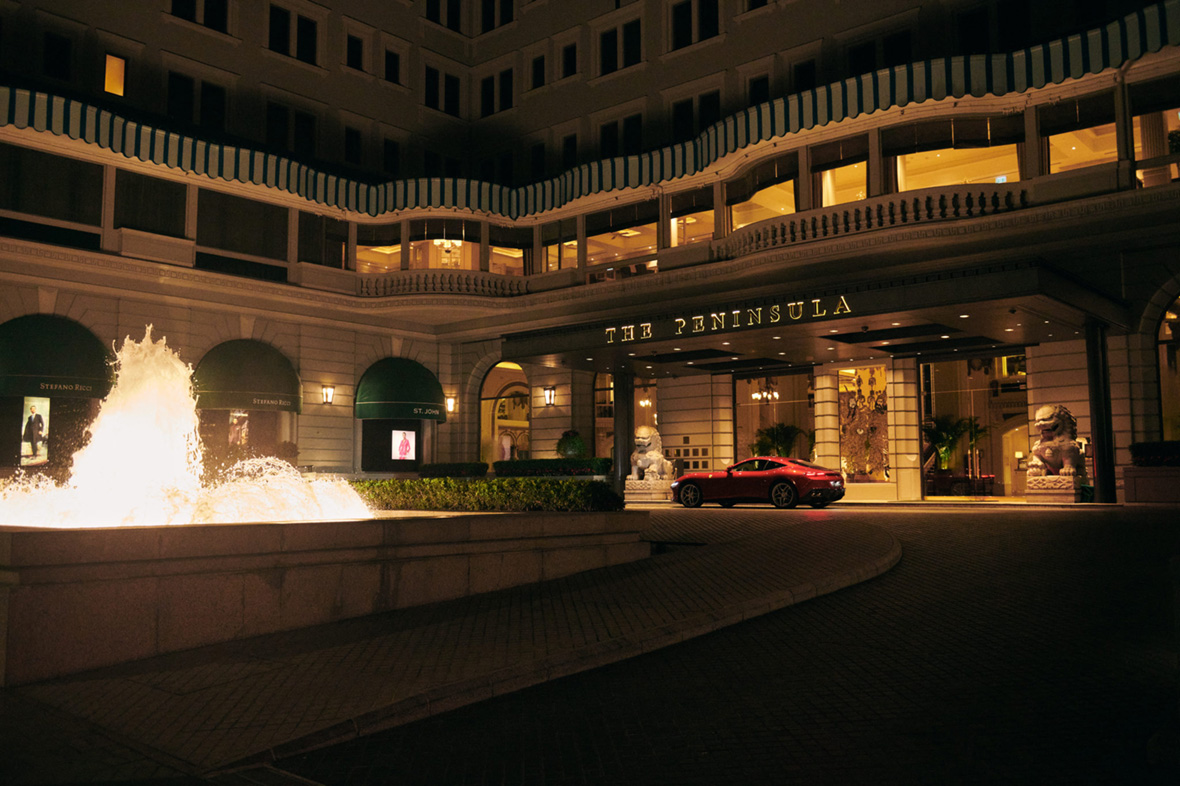
MAEKAN: In the age where branded content is still in flux, what does it mean for you to present such an unorthodox presentation?
Frank: Well, first off, I’m glad you noticed that it isn’t just another way of presenting “branded content” because the intention wasn’t to make it just like every other branded piece of film. It means a lot that Ferrari was willing to place their trust in us to do something unorthodox.
I made sure from the beginning that everyone understood that first and foremost this is an artistic project—that where possible, we shouldn’t have to compromise on the film production aspect, for the sake of the product. I mean the formula for a car launch is generally pretty simple, it’s a grand flashy event, there are exciting adrenaline-filled videos, loud noises, lots of beautiful decor with beautiful people, culminated by a grand unveiling of a car in front of a whole bunch of customers and press.
This time though, we approached every aspect of it just like we would to any film production with castings, fittings, storyboard, location scouting, post-production treatments. I mean, I always say this, if you want to see fast people in fast cars doing fast things—there’s a lot of that on the internet and a lot that is beautifully shot. But this was really us trying something different. To tell a love story, but one that also starred the Roma.
MAEKAN: 在品牌内容瞬息万变的时代,对你来说,以这种突破常规的方式来打造品牌内容意味着什么?
Frank: 首先,我很高兴你没有把它归为通常的“品牌内容”,因为我们不只是想制作一部普通的广告影片。法拉利愿意信任我们这种“不走寻常路”的做法,这对我们来说意义非凡。
我从一开始就确保每个人明白,这首先是一个艺术项目,所以,无论如何,我们绝不能为了产品而在影片制作方面作出妥协。大多数汽车宣传的套路都非常简单。举办一场盛大豪华的活动,播放一些活力四射的视频、热热闹闹的场面、令人眼花缭乱的漂亮布置和面容姣好的模特,最后让新车在一大群客户和媒体前隆重揭幕。
但这一次,我们在每一个方面都完全按照电影制作的方式来处理,包括选角、试装、故事板、外景勘查、后期制作。正如我经常说的,如果你只是想看一些很酷的人开车飞驰,做一些很酷的事情,网上有很多这样的东西,而且很多都拍得很漂亮。但我们想尝试不一样的东西。我们想讲一个爱情故事,一个由 Roma 参与演绎的故事。
MAEKAN: Is there something in particular about the Roma that aligns with this idea behind the film?
Frank: You know, maybe we should’ve started with this question, haha. So the overarching global product message for the Roma is “La Nuova Dolce Vita”—the new Dolce Vita.
So La Dolce Vita refers to a period of Italian cultural renaissance, primarily centered around Rome in the ’50s and ’60s and spoke of appreciating beauty, pursuing elegance, and generally living a full, rewarding life. So that period was immortalized in the legendary Italian cinema of its time, which is where it ties into our concept of our own tribute to our film industry.
MAEKAN: Roma 有哪些地方是与电影背后的理念一致的吗?
Frank: 也许我们一开始应该先从这个问题开始说起,哈哈。Roma 在全球的产品信息是“La Nuova Dolce Vita”(La Dolce Vita),即甜蜜新生活。
“La Dolce Vita”是意大利的一个文化复兴时期,以 50 年代和 60 年代的罗马为主,指的是欣赏美、追求优雅以及过上充实而有意义的生活,当年的很多经典意大利电影永远地记录下这一个特别的时代,我们也由此有了这次以影片来致敬香港电影行业的概念。
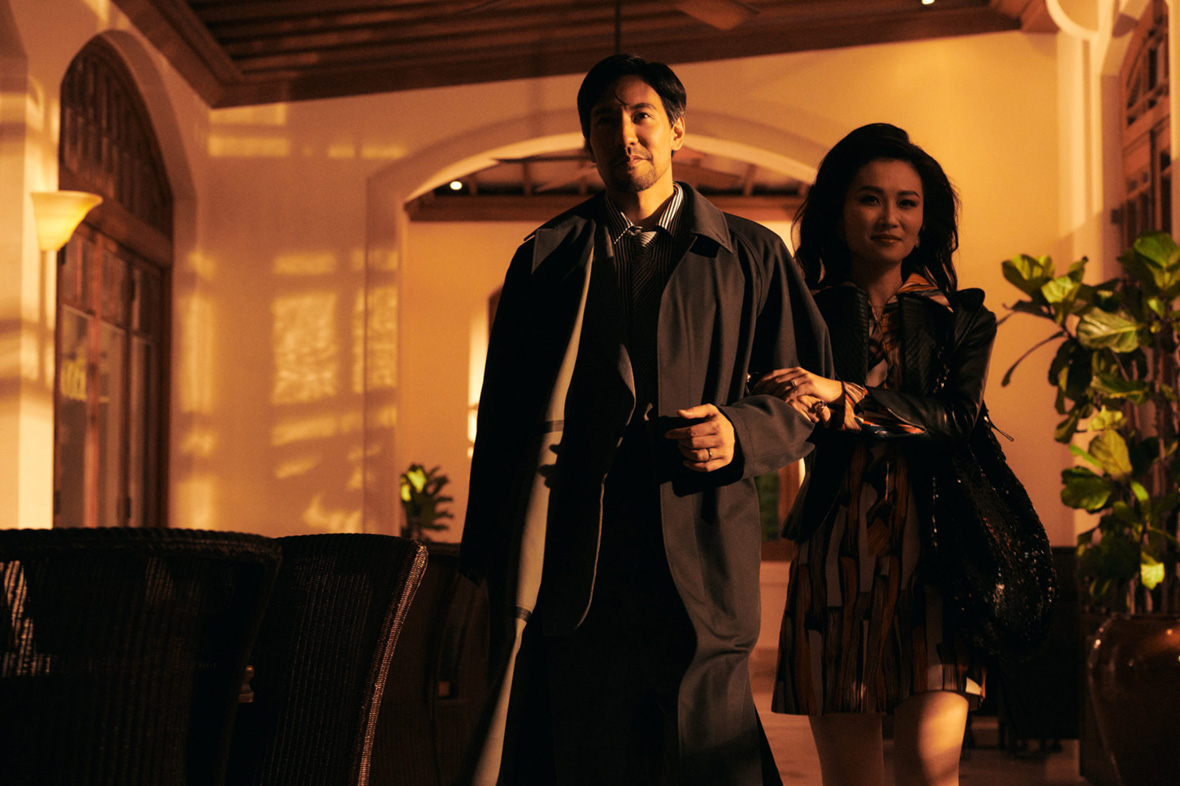
MAEKAN: How does a brand like Ferrari, that’s so rooted in tradition and innovation, move forward sensibly and in a balanced manner?
Frank: Hmm… Carefully. I think that’s the best way to put it. It’s not an easy challenge when they have to be custodians for a brand that is so celebrated for its heritage—there are very few brands, especially in automotive with such an unbroken lineage such as Ferrari, which is why they rightfully hold on to their heritage and past accomplishments. But over the last few years, there has been a push from the factory to try and align a more forward-facing strategy for the future.
So, this is my personal view only. They do this with one foot in the past and one in the future. Product-wise, every generation sees a quantum leap in technology that’s filtered down from their racing programs, and you have to remember, that Ferrari is a racing company, first and foremost.
You’ll see this technology in the interior and the all-new TFT display in the Roma. I think Ferrari always lets the product lead the brand message. And with that, the brand follows, and the trickle-down effect is more innovative communications campaigns, content production, and event experiences that are born from this drive. But as I said, this is my personal opinion only.
MAEKAN: 对于像法拉利这样兼具传统与创新的品牌,应如何明智而平衡地往前发展?
Frank: 小心谨慎,三思而行,这样说可能是最合适的。对于法拉利品牌来说,要守护自身如此悠久显赫的品牌历史绝非易事——尤其是在汽车领域,很少有品牌像法拉利这样拥有如此完整的品牌传承,这也是为什么他们一直在坚守品牌的传统、以及过往的成就。而在过去几年间,制造商方面也一直努力想转换更具前瞻性的战略,以适应未来发展。
这只是我个人的看法。他们的应对办法是一只脚站在过去,一只脚站在未来。在产品方面,每一代的车型都能看到从赛车领域提炼出来的技术。别忘了,法拉利首先是一家赛车公司。
关于这一点,你可以从 Roma 的内饰和全新的 TFT 显示屏中看得出来。一直以来,法拉利都是用产品来传达品牌信息。在产品的基础上,进行品牌推广,通过涓滴效应,由此催生出更具创新性的广告宣传、内容制作和活动体验。但正如我所说,这只是我个人的看法。
Website: www.blackbird-automotive.com
Instagram: @blackbirdautomotive
Media Partner: MAEKAN
Contributor: Eugene Kan
Chinese Translation: Olivia Li
Images Courtesy of Blackbird Automotive
网站: www.blackbird-automotive.com
Instagram: @blackbirdautomotive
媒体合作伙伴: MAEKAN
供稿人: Nate Kan
中译英: Olivia Li
图片由 Blackbird Automotive 提供

